I’m sure many of you have either lived by, or heard great stories from the grandparents, about using or consuming bacon grease for cooking. My grandfather was a butcher and loved a good fat sandwich. I loved everything about him, except that. But, to each their own.
Anyway, many counters in the past have hosted canisters of bacon grease ready to use for adding flavor in cooking and frying up tasty dishes, such as potatoes. This grease was often just left out on the counter, and not refrigerated at all. And, it seems that people survived just fine.
Now, some people today might think that this is taboo and that it should be refrigerated, if not even used at all. However, I think you should use your gut instinct on this. Mine says that there are probably enough natural and added preservatives in some meats, especially pork, that it creates a favorable environment for preventing bacteria to thrive.
Take bacon. It’s cured in salt, which is an effective preserving agent. In fact, store-bought bacon also has nitrates added, due to its preservation tendencies.
In addition to the salt in pork, grease in itself can serve as a preservative because it does not allow for air to penetrate or bacteria to grow. It can act like a seal, much like using wax to seal homemade jams and jellies. So, what about lard?
Related: 25 Survival Uses For Leftover Bacon Grease
Lard as a Meat Preservation Option
While lard might not contain much salt, or other chemicals, it’s still fat. And, being pork, I tend to think that it would have some natural salt and preservatives in it.
Even so, the grease alone will act like a sealant and will help to keep bacteria at bay. It basically locks it out and protects the meat. In other words, sealing meat in lard can be an effective way to store meat for months, especially the colder months. Now, just keep in mind: this is for cooked meat, not raw.
While lard may be easy to make, I chose store bought to use for this article. Either is fine though.
Needed Supplies
Some of the supplies used can vary, depending on what you have and what you prefer. But, it’s a short list:
- Meat – I have known and read about pork and beef, but nothing on chicken yet at this.
- Lard – This can be either homemade lard or store bought.
- Crock or Canning Jar (and lids) – The size will depend on how much meat you plan on preserving.
- Pans – You will need pans for both cooking the meat, as well as heating the lard. Or, one can be used for both (see my instructions).
- Funnel – This will make it easier to pour the lard over the meat, if you choose to use canning jars instead of a crock.

Related: Canning Meatloaf for Meals in a Jar
Now, let’s get started. At this time, I am only going to use a small amount of meat and lard, because it’s for the purpose of this article. However, when doing this for a batch for storing for the family, the amounts of product would be much larger.
I am also using a canning jar at this time. My instructions will be based on that, not the crock. But, I will add a few comments regarding the use of a crock at the end.
Step 1
First, cook the meat. It should be thoroughly cooked by the time the jar is sealed. Considering that the meat will still be hot when placed in the jar, as well as hot lard being poured over it, it’s most likely that the meat will continue to cook slightly, maybe a couple degrees.
So, if you use a meat thermometer, stop the cooking process a couple degrees short of your desired temperature. I am using pork sausage patties.
Step 2
Put the meat in the jar (either whole, or sliced). Lightly place the lid on it to keep it warm while you move to the next step.
Note: You could do steps 1 & 3 at the same time, as long as you keep an eye on both. I chose to do them back to back, but melted the lard in the same pan that I used to cook the sausage patties. In hindsight, I would have used a smaller jar. I only wanted enough meat in the jar for 1 meal for my family, and the quart is a little bit larger than I needed.
Related: Pressure-Canning Hamburger Meat for Long Term Preservation
Step 3
Melt the lard in a pan, so it’s hot and easy to pour. Again, I used the same pan…easy to clean and also grabbed some of the grease and flavor from the cooked sausage.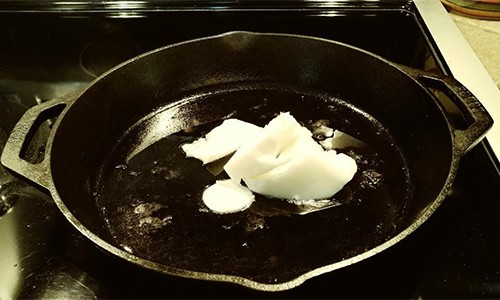
Step 4
Pour hot lard over the meat in the jar.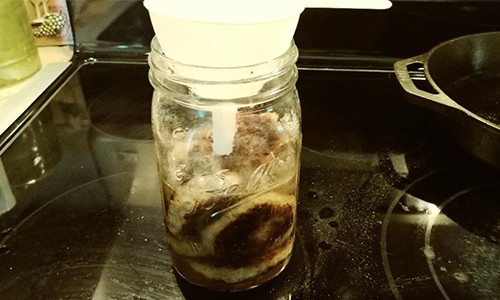
Step 5
Place the lid and ring on the jar and tighten.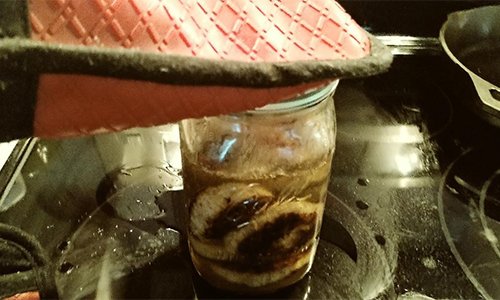
Step 6
Wait for the seal. Pop! It was sealed rather quickly.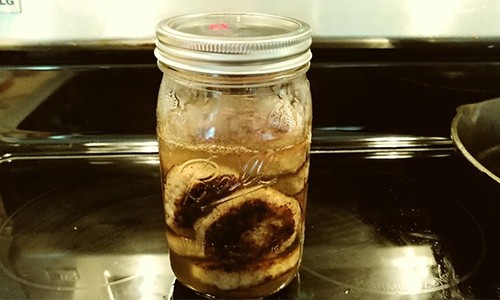
Whether you use the canning jars, or a crock, make sure to store the container(s) in a cool and dry location. It does not have to be refrigerated. But, it has to be cool enough that the lard will not melt again.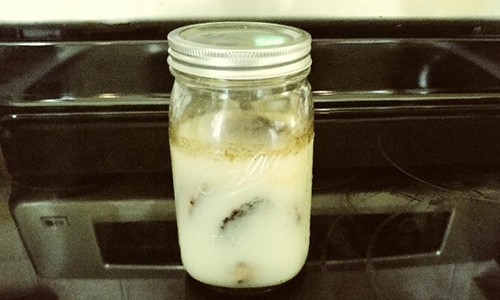 Now, if you use the canning jar method, it might be difficult to get it sealed again once you open it. So, this might be best if you want to preserve small batches separately. You might be able to re-seal it with more hot lard and a new lid. However, I have never tried to re-seal a canning jar.
Now, if you use the canning jar method, it might be difficult to get it sealed again once you open it. So, this might be best if you want to preserve small batches separately. You might be able to re-seal it with more hot lard and a new lid. However, I have never tried to re-seal a canning jar.
If you use a crock, the amount of meat you can preserve will depend on the size of crock you use. By using this method of storage, you can take out what you want to use, and simply add more hot lard to cover the meat.
Related: How to Can Your Leftover Turkey
Tips on Using the Crock Method:
Place the cooked meat into a dry and sterilized crock, cover the meat completely with the hot lard. Cover that with a piece of clean wax paper, then cover the wax paper with the crock’s cover. When you want to take some meat out to use, make sure to cover the remaining meat with more hot lard and cover again with clean wax paper and the crock’s cover.
The less often the meat is disturbed, the better results you should have in the end.
Preserving meat in lard is not meant to be for years, but rather months…preferably the colder months so the meat and lard do not warm up.
You may also like:
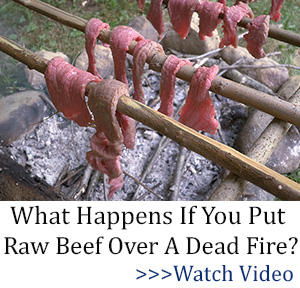 How To Stockpile Lard, The Calorie Rich Survival Food Of The Great Depression
How To Stockpile Lard, The Calorie Rich Survival Food Of The Great Depression
This Homemade Device Can Power Up Your Entire House 7 Days in a Row (Video)
Is it Safe to Drink Old Stored Water?

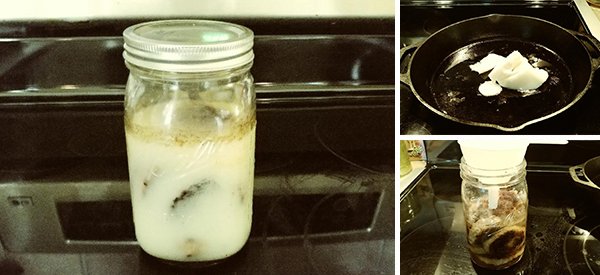













Sooooo when you’re ready to take it out & eat it, it will be a solid cake of hard grease. Do you warm it up in a double boiler, or oven on low to melt it to use? I’m also guessing you should melt & use the whole thing in one setting
There used to be a C-ration called sausage patties in gravy. It really was sausage patties in lard because the can was filled with congealed (grease)(lard), especially in severely cold weather. Some guys really like it and I was always able to trade it off for ham and lima beans which strongly resembled a meal that my mother frequently made at home. We were poor but I never realized it until I started reading about the folks who are considered “below the poverty line” by fat cat goobermint officials. Everyone I knew was poor but we never realized it. We always thought we were middle class Americans. Heck, even the wealthy only got 3 channels on their TV set and only a test pattern after 11:00 pm. I don’t know how we survived.
Bet you had the best parents too LCC! They are the ones whose kids never have the foggiest idea that their home life was anything short of the best it could possibly be! It’s only in hindsight that kids realize what an amazing job their parents have actually done!
Our typical meal was something like vienna sausages floating in a pot of beans with scratch biscuits (lard!) on the side. The Governmental Official Bureau of Nutrition these days probably considers that child abuse. As a Libtard I don’t begrudge anybody their nutritional assistance payments and free school meals but it would seem more efficient for the Government to supply information to the poor on how to eat like the poor! Navy beans are 1$ a pound, Vienna Sausage 50 cents a can, canned biscuits 1$ a pound. Feed 4 for $2.50! Keeping your self respect is cheap.
No, we used to just put it in 10 gallon crocks, then take it off a layer at a time. If you want small, easy to use batches, use quart jars and melt in a pan of water on low heat. niio
Why does this website keep insisting I’ve already made this comment and not allow me to post my comment?
freida: Mine does the same, but the post won’t show till the next day. niio
My grandmother fried up sausage patties and poured hot lard to cover them in a five gallon crock.tmThis was undone in the fall at butchering time. She had sausage for nearly a year this way in the days before refrigerators
My mother in law stored fried venison in a crock like this.
The French have been doing that for a very long time with duck meat. It is called duck confit. It was used to preserve duck meat long before refrigerations.
There is an article in the archives about how to do make duck confit which could have been the companion piece to this article.
Use it in one setting unless you can refrigerate it. Then it should be good around a week in the grease. Use some of that grease to mkje a rue and milk or cream gravey.
I growed up saving bacon grease and we used it for seasoning foods all the time. I actually thought this was common practice. The next time yall cook a pot of dry beans put a heaping table spoon in there with them and a big cake of cornbread with a chunk of onion. Thats good eating there.
KJ, good article and I like reading it! But, what’s wrong with fat sandwiches? Get rid of the bread an you have keto. Dad and my grandfathers would take them to the mines. The women saved fat of the hams, hams the men cured and smoked for them, fry it up, add homemade brown mustard, and you had a meal that lasted hours after eating. Plenty of energy, at that. At one time, and in the future, smoked lard, from bacon and hams, as well as smoked beef, cost more than good quality butter. niio
Gourmet cuisine! All you need to do is follow with a small salad and cheese course along with a chilled bottle of champagne.
CC: thought you might look at this. https://www.finalprepper.com/urban-survival-surviving-in-the-city/
Urban Survival: Surviving in the City
Of course, you’re probably already doing all of it! niio
After you have eaten your meat, use the remaining lard to make soap. You could also strain the renaining kard and use it for frying and then use it to make soap.That will allow you to waste nothing.
Bill: When it’s too used to be food, biodiesel! niio
I need to learn how to make soap with lard! Is there an article on that???!!!!
Cathie: Easy to do, but it has to age for weeks! don’t expect perfection right off, but I hope it’ll come out great. Nor do you have to use lard, but can use cooking oil, instead. Any fat will make soap. niio
https://www.goodhousekeeping.com/home/cleaning/a20705805/how-to-make-homemade-soap/
https://thenerdyfarmwife.com/soap-making-101-making-cold-process-soap/
https://thethingswellmake.com/making-a-basic-beginner-soap-and-then-making-it-fun/
I was born in 1952 and lived in a small town, but both sides of my family were farmers. My father’s brother’s killed hogs during the first hard frost each fall. When I got big enough I helped by scrubbing off the hairs and bristles. I watched my aunt’s make sausage and render the lard. They would wind the sausage into what they called lard cans and pour hot boiling lard over the sausage until the cans were full. These were stored in the smoke houses along with all the meat that was smoked. They did this up into the late 60’s as long as their health was good. My grandmother would send me out to the smoke house to open a lard can and get out a few links of sausage along with the lard. She would scrape the excess lard off then fry or bake the sausage. Of course the excess lard went into the lard can in the kitchen for later frying oil.
The only spanking she ever gave me as she caught me in her smoke house cutting plugs out of a smoked ham with my brand new bone handle Barlow folding knife. You just did not mess around in someone’s smoke house.
Sounds like an episode of Anthony Bourdain, No Reservations. I hope you have this all written up in the family cookbook!
Red- Much appreciated! Many thanks for sending along these links! Will all make wonderful bedtime stories!
Houdini: At one time, smoked lard, drippings from bacon, ham, and so on, was more expensive than good butter. niio, walk in beauty
Bone handle Barlow knife! Hadn’t thought of those in years.
I searched all 21 pages of “How To” and couldn’t find the article I was looking for about duck in lard. Actually, I think it was duck in duck fat that makes duck confit. Obviously I am having some kind of hallucinatory episode.
LCC – Looks like there’s room here for you to submit an article for publication.
I agree! niio
Far out man, it was hallucinatory episodes turned me into a Liberal.
Growing up my grandparents killed, dressed and processed all their meat beef and pork. The hams, hocks jowls, and side meat was smoked. The sausage was pack in a muslin casing and smoked as well. Left over sausage was cooked and canned without fat, and kept well.
I get pig fat and render 4-5lbs to make lard. I can the lard in pint and 1/2 pint jars. I just opened my last jar that I canned 5-6 years ago. So not only should it keep meat but it’s a great way to store the lard itself
My dad, born in 1926, was raised in the country with the family keeping a few cows, chickens and hogs. He told me many times of his mother preserving meatballs in a “crock of grease” when he was a child.
We cannot find tallow at all in our are of West Virginia. In fact, the butcher shops are over an hour away in Charleston! Occasionally, I’m able to find fastback at Walmart, but only occasionally. So how would I use this to make pemmican? Also, though I have a stick blender, my regular blender recently died and I have to save money to buy a new one. (Who knew they had increased in price so much?). Therefore, after drying my beef, I count get it into powder, but just fine bits. I had the opportunity to dry blackberries this year too, but the are also not a fine powder. So what adjustments do I need to make to make pelican with these ingredients? Would rosemary, sage, or thyme be appropriate to add to the pemmican? It seems any of these herbs might keep the product from tasting too fatty and still go well with the berries.
Any help would be appreciated! Thank you in advance!
freida: Pemmican is a sausage. Basics are chopped dried meat, which you have, dried berries and dried fruit, tallow or lard. Tallow comes from any mammal not a pig. I heard of people using schmaltz, lard, fatty bacon, you name it. Just so it soaks into the mix. When smoked, put a pan under it to save the drippings. this is smoked lard (or tallow) and used to bring a higher price than good quality butter. For that matter, you can use butter for the fat. The ancestors hung it from the ceiling of the longhouse where it was in smoke 24/7 and it kept well from the winter hunt well into summer. niio
Tallow is hard fat, typically beef or lamb (or mutton, goat or deer) pork fat is soft, chicken fat almost liquid. The drippings from roasting meat spread on bread witha sprinkle of salt is delicious.
Amazing tips! I think most of the people did not know about it. Thanks for sharing such nice tips! I really love this blog and content is really useful. Thanks for telling us about the importance of solvency. Keep sharing this post more and more.
My Grandparent would take pork chops and Sear each side then put them in a crock with a layer of lard about 1 1/2 inch thick then spread the pork chops then more lard until they were at the top. Covering each layer with lard. They will keep for a long time in a cool spot. When you need chops just reach in and pull out what you needs.Be sure and keep them covered with lard. It’s also goods practices to have a wooden cove to keep out bugs and other unwanted critters out.
You can buy good pork fat at butcher shop. Then render it down. I am pushing 84 years old and have slowed down but still try and do as much in the old ways. God Bless all.
Gman
One thing that nobody mentioned here is that the lard you preserve anything is has the highest calorie content of any food you are preserving. When in a survival mode that fat can be the difference of having the energy to continue on or give up. It can be a very valuable addition to your survival kit.